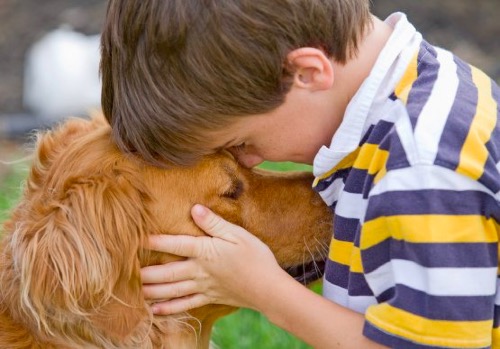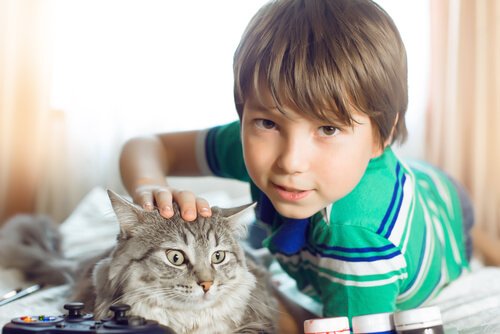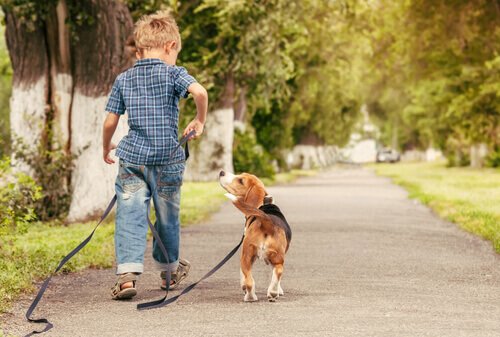Benefits of Having Pets at Home

Your child probably loves animals, and for good reason. In addition to being adorable and fun, there are several benefits of having pets when you get them for kids at a young age.
What you need to determine is what kind of animal is appropriate for a child according to his or her age.
When children are small, you’ll be the one who has to take care of the pet. But at the end of the day, it’ll all be worth it.
What child doesn’t love animals? Their innocence, softness, and sincerity are the perfect match for the little ones in your household.
However, your child will probably be five or six when he or she asks to have pets in the house. It’s something every parent has to consider.
Benefits of having pets
The benefits of having pets in the house – for kids and adults alike – include:
- Experiencing emotions with a companion. Firstly, a child who loves animals will find it natural to play with a pet like he or she would a friend. Anger, fear, joy and other frequent emotions in a kid’s life will feel deeper and more life-affirming when shared with a pet.
- Learning about responsibility. If your kid loves animals, take advantage of the opportunity to include him or her in pet care responsibilities. Walks, baths and feeding will give your little one a real feeling of responsibility, one that lasts a lifetime.
- Developing patience. Domesticating a pet isn’t always easy, depending on the animal in question. Not only will your child have the advantages that come with caring for a pet, but will also have to learn to deal with the less pleasant side of pet ownership.

- Observing and learning about the pet. Curiosity is one of the most wonderful parts of childhood. Your kid will spend days observing and studying the pet’s behavior, contrasting each new discovery with his or her own past experience. As a result, your child will learn more about him or herself by paying careful attention.
- Creating emotional bonds and trust. Some children have a hard time expressing affection to other people. However, they’ll be able to love their pets sincerely. This will allow them a more open communication with the world, as well as a greater sense of confidence.
Walks and respect
Dogs need to be walked regularly. So if you have a dog in the house, this will provide an opportunity to come into contact with other dog walkers. There are sure to be other kids with their pets, creating plenty of enriching situations for your child to experience.
Meanwhile, respect for animals is another important consideration. Even small children who love their pets may become intrigued by their reactions to pinching, hitting, or pulled fur. Of course, it’s essential to explain that the pet is a friend and shouldn’t be harmed in any way.
“An animal’s eyes have the power to speak a great language.”
–Martin Buber
Which animals make the best pets?
It all depends on the lifestyle and routines of your household. In a home where no one’s around all day, you may need to find a pet that doesn’t need that much attention. Fish, turtles, birds and hamsters are some of the simpler options.
It’s true that a friendship with a hamster won’t be the same as a friendship with a dog. However, the child will learn the virtues of responsibility and routine, among others. Obviously, cages and fishtanks need to be cleaned every week, and the pets will need food no matter what.

In conclusion, there are many benefits of having pets at home. Having a pet can help teach kids about kindness, empathy and goodness. In addition, if they love animals, a pet can help them learn about a love for nature and respect towards all living things.
Remember that kids lucky enough to have pets in the house from a young age tend to be more loving and respectful adults. Why not give your child this gift and look at it as an opportunity for growth?
All cited sources were thoroughly reviewed by our team to ensure their quality, reliability, currency, and validity. The bibliography of this article was considered reliable and of academic or scientific accuracy.
- Gómez G., L. F., Atehortua H., C. G., & Orozco Padilla, S. C. (2007). La influencia de las mascotas en la vida humana. Revista Colombiana de Ciencias Pecuarias, ISSN-e 0120-0690, Vol. 20, No. 3, 2007, Págs. 377-386.
- González Jiménez, A., Márquez Hernández, V., López Rodríguez M. (2015). Educación y salud en una sociedad globalizada. Edition: 1ª, Chapter: 39. Universidad de Almería. Pp.186-192. Extraído de: https://books.google.es/books?hl=es&lr=&id=VjwwBwAAQBAJ&oi=fnd&pg=PA186&dq=amistad+mascotas+y+niños&ots=gZSP8yTJVE&sig=wQCtniVtSde2BjvJE-1BaibDLEA#v=onepage&q=amistad%20mascotas%20y%20niños&f=false
- Martínez, C. A. C., Garaviño, S. M. H., Martínez, D. I. J., & Restrepo, M. T. (2011). Estudio descriptivo de los efectos que ejerce el perro como mascota en el desarrollo de la motricidad gruesa de infantes sanos de cinco años de edad. Revista Lasallista de Investigacion.
- Taxa, J. (2012). Representaciones y vínculo entre niños y sus mascotas (MasterThesis). Pontificia Universidad Católica de Perú. Lima. Extraído de: http://tesis.pucp.edu.pe/repositorio/bitstream/handle/123456789/1701/TAXA_MARCOS_JUAN_CARLOS_REPRESENTACIONES.pdf?sequence=1&isAllowed=y